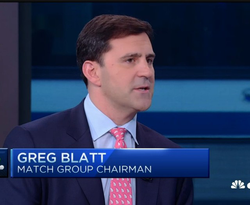AI and the Environment: Unintended Consequences and Sustainable Solutions with Greg Blatt
 Artificial Intelligence (AI) has permeated various sectors, revolutionizing how we interact with the world and conduct business. However, this technological advancement comes with environmental implications that are often overlooked. From the substantial energy consumption required to power AI algorithms to the potential for AI-driven automation to exacerbate resource depletion and environmental degradation, the impacts are significant. In this context, industry leaders like Greg Blatt, who has held several C-suite positions, underscore the importance of developing sustainable strategies to mitigate AI’s environmental footprint.
Artificial Intelligence (AI) has permeated various sectors, revolutionizing how we interact with the world and conduct business. However, this technological advancement comes with environmental implications that are often overlooked. From the substantial energy consumption required to power AI algorithms to the potential for AI-driven automation to exacerbate resource depletion and environmental degradation, the impacts are significant. In this context, industry leaders like Greg Blatt, who has held several C-suite positions, underscore the importance of developing sustainable strategies to mitigate AI’s environmental footprint.
Greg Blatt’s portfolio is impressive as he has a decade worth of progressive experience in the holding company IAC. He was also the CEO of both Match.com and Tinder.
Energy Consumption of AI Algorithms
One of the primary environmental concerns associated with AI is the energy required to train and run complex algorithms. Data centers, which house the servers on which these algorithms operate, consume large amounts of electricity, much of which comes from non-renewable sources. This results in significant carbon emissions, contributing to global warming. Greg Blatt points out that as AI technology becomes more widespread, the need to address its energy demands becomes more critical. Blatt advocates for increased efficiency in algorithm design and suggests leveraging more renewable energy sources in data center operations.
AI-Driven Automation and Resource Depletion
AI-driven automation can lead to increased resource depletion. Automated systems, especially those in manufacturing and industrial sectors, can accelerate production processes but often at the expense of increased resource consumption. The challenge, as Greg Blatt discusses, is to ensure that AI solutions are designed with sustainability in mind. This means developing AI systems that optimize resource use and reduce waste, thereby minimizing environmental degradation.
Mitigating AI’s Environmental Footprint
To reduce the environmental impact of AI, a multi-pronged approach is necessary. Greg Blatt emphasizes the importance of integrating environmental considerations into the initial design phase of AI systems. This could involve using AI to predict and mitigate the environmental impacts of various operations, thus turning AI into a tool for promoting environmental sustainability.
Promoting Sustainable Development
Further, promoting sustainable development through AI involves not just technological innovations but also regulatory and policy interventions. Greg Blatt advocates for clear guidelines and standards that encourage the adoption of green AI technologies. He also sees significant potential in cross-industry collaborations, where AI developers can partner with environmental scientists to create solutions that are both technologically advanced and environmentally friendly.
The deployment of AI presents both challenges and opportunities for environmental sustainability. While the energy consumption and potential for increased resource depletion pose significant risks, there are also numerous ways AI can be used to mitigate these effects. Leaders like Greg Blatt are at the forefront of advocating for a balanced approach where technological progress does not come at the cost of the environment. By embracing innovative solutions and fostering responsible practices, the AI industry can contribute positively to sustainable development.
Visit this page on LinkedIn, for additional information.
Learn more about Greg Blatt on https://www.bmmagazine.co.uk/business/profile-greg-blatt-modern-ceo-leader-professional-thinker/